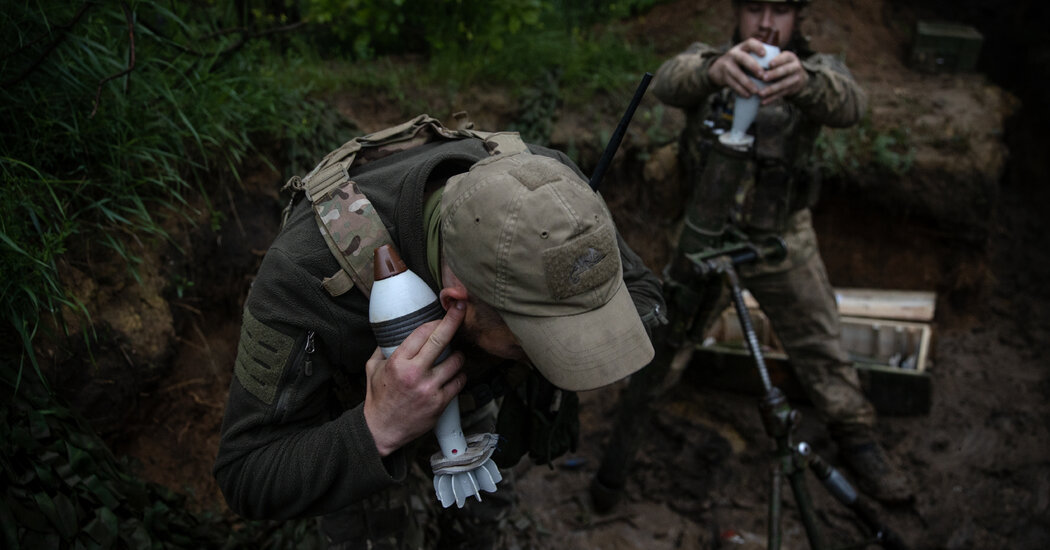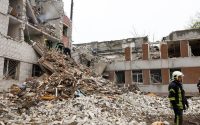What We Know About Where Aid Can Enter Gaza
Following Israel’s incursion into Rafah this week, the Israeli military briefly shut down the Kerem Shalom crossing and seized the Gaza side of the Rafah crossing, choking the flow of desperately needed food, fuel and medical supplies at a time when experts believe parts of Gaza are already experiencing a famine and several have died from malnutrition.
According to United Nations data, the number of aid trucks entering Gaza hit a peak last week since October: A total of 1,674 aid trucks entered Gaza through the Kerem Shalom and Rafah crossings, the main entry points of aid into the enclave. But since Sunday, no aid trucks have entered Gaza from either entry point, even after Israel said that it had reopened the Kerem Shalom crossing on Wednesday.
The entry of aid into Gaza has been heavily restricted by Israel since the war started, creating what aid experts say is a human-made hunger crisis. Humanitarians warn that the crisis will worsen without the fuel necessary for bakeries and hospitals to operate.
Here is a look at the major routes for aid into Gaza and their status.
Kerem Shalom
Israel shut down the Kerem Shalom crossing after a Hamas attack on Sunday killed four of its soldiers in the area.
On Wednesday, Israel said it had reopened the crossing, but the United Nations and others disputed that claim because no trucks were being allowed through. On Friday afternoon, Israel allowed at least 157,000 liters of fuel to enter, according to Scott Anderson, a senior official at UNRWA, the U.N. agency for Palestinians. But no humanitarian aid, which includes food and medical supplies, has entered since Sunday, he said.
Egypt, which plays an important role in facilitating aid collection and delivery, has complicated matters by resisting sending trucks to Kerem Shalom, according to several Western and Israeli officials; American and Israeli officials believe that Egypt is putting pressure on Israel to curb its invasion of Rafah.
The Kerem Shalom crossing has been a major artery for aid into Gaza since it opened in December and is where most aid trucks now enter. Before Israel’s incursion into Rafah, an average of 185 trucks entered Kerem Shalom daily last week, peaking at 270 trucks last Friday, according to United Nations data. Aid groups have said for months that at least 300 trucks are needed daily to prevent further malnutrition and worsening hunger.
Rafah
The Rafah crossing remains closed.
The crossing has been an important gate for injured and sick people to leave the enclave to receive medical treatment abroad. The Gazan Health Ministry has said that dozens of people with illnesses such as breast cancer and lymphoma have been unable to leave Gaza since Sunday.
Erez
The Erez crossing at Gaza’s northern border is open, but limited aid is trickling through, according to data from COGAT, the Israeli agency that oversees aid delivery in Gaza, and an UNRWA official. It is the only border crossing in the north and was only opened last month after pressure from President Biden.
COGAT said on its website that 36 aid trucks and one fuel truck passed through the Erez crossing on Thursday. Mr. Anderson said UNRWA sent 67 trucks through the Erez crossing on Wednesday and that nothing has passed through since. A reason for the discrepancy between the numbers and days was not immediately clear.
Sending more aid to northern Gaza would be crucial to prevent further malnutrition-related deaths in the area. In March, health experts projected that northern Gaza would soon face a famine, and, on Saturday, Cindy McCain, the executive director of the World Food Program, said that parts of Gaza were already in one. As of mid-April, Gazan health officials said that at least 28 children younger than 12 had died from malnutrition in hospitals and perhaps dozens more outside medical centers.
By sea
Since Gaza has no international pier of its own — Israel has for years prevented the construction of one — the U.S. military said in March that it would build a temporary pier to get aid in by sea, part of what it said was a multipronged effort to deliver humanitarian assistance to the enclave.
The Pentagon said on Thursday that the floating pier and the causeway had been completed but that bad weather and sea conditions had prevented their installation. They remain at the Israeli port of Ashdod.
An American cargo ship, called the Sagamore, departed from Cyprus on Thursday, the Pentagon said, and ship tracking websites show the ship positioned at Ashdod. The Sagamore is carrying more than 170 metric tons of nutrition bars, according to the U.S. Agency for International Development, but cannot be unloaded and distributed in Gaza until the pier is installed. It is unclear when that might be, as the Pentagon said the installation would be dependent on security and weather conditions.
Airdrops
COGAT said on Thursday that 117 packages were airdropped in northern Gaza that day. Airdrop operations only began in March to try to prevent a greater humanitarian disaster as hunger grew in the Palestinian territory. COGAT said 99 airdrop operations by nine donating countries, including the United States and Jordan, had been completed since March.
But airdrops have been criticized by aid experts as perhaps the most inefficient way to deliver aid into Gaza, and in some cases, deadly. Airdropped aid packages in March fell on several Palestinians in Gaza City, killing five and wounding several others, according to Gazan health officials. In another case, a dozen Palestinians drowned while trying to retrieve packages that had been intentionally dropped over the water to prevent further deaths if its parachutes failed to deploy.


